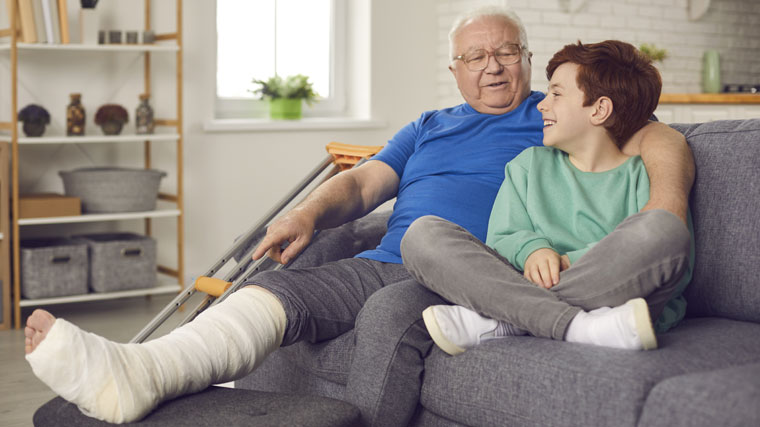Fractures Are Common, Treatable Breaks In Your Bones

Answer a few questions and we'll provide you with a list of primary care providers that best fit your needs.
It’s all fun and games until someone breaks a bone.
When you fracture a bone, your bone is broken. Different types of fracture can be caused by different kinds of accidents or falls.
“There’s a lot of different fracture classifications based on where and how and what the fracture looks like,” says Jennifer Jerele, MD.
Some common types of fractures include:
- Comminuted fracture. Your bone shatters into at least three pieces.
- Oblique fracture. Your bone is broken at an angle.
- Open/compound fracture. Your skin and your bone are both broken by the injury. You might be able to see your bone through the wound.
- Stable fracture. Your bone is broken, but both pieces line up and are barely out of place.
- Transverse fracture. Your bone is broken horizontally.
The worst kind of fracture to have is a compound or open fracture, Dr. Jerele says.
“They have such high risks or higher risks of complications, like infection,” she says. “When infection sets in on a bone, sometimes that requires multiple surgeries to get that to go away.”
If you have a fracture near a joint, that can also be severe and challenging to repair.
“It does lead to increased risk of things like arthritis down the road,” Dr. Jerele says. “So you have to get those back as close to perfect as you can.”
Causes Of Fractures
Some activities can also be more dangerous and likely cause bone fractures.
For example, jumping on trampolines can lead to injuries, including serious breaks.
Riding ATVs, dirt bikes, and motorcycles also increases your risk of fractures.
And, take extra care to avoid fractures during the holidays by making sure ladders are secure when hanging lights and other decorations.
As you age, your bones can soften and your risk of osteoporosis increases. This change makes it more likely for you to have a hip, spine, or wrist fracture when you’re older.
Treatment Options
The way your health care provider decides to treat your fracture will depend on the location and type of fracture you have.
Some treatment options include:
- Cast immobilization. A plaster or fiberglass cast is used to help keep your broken bones still in the right position until they heal.
- External Fixation. Metal pins or screws are put in your broken bone both above and below the fracture. They connect to a metal bar outside the skin. This device stabilizes your bones and holds them in place while they heal.
- Functional cast/brace. This limits the way you can move some joints near a fracture.
- Internal Fixation. An operation to get all the pieces of your broken bone back into their normal positions. Metal rods or screws might be used to hold all the pieces in place.
- Traction. A gentle, steady pulling is done by your provider to help align your bone at the break.
Answer a few questions and we'll provide you with a list of primary care providers that best fit your needs.
Source: American Academy of Orthopaedic Surgeons; Jennifer Jerele, MD, Premier Orthopedics





